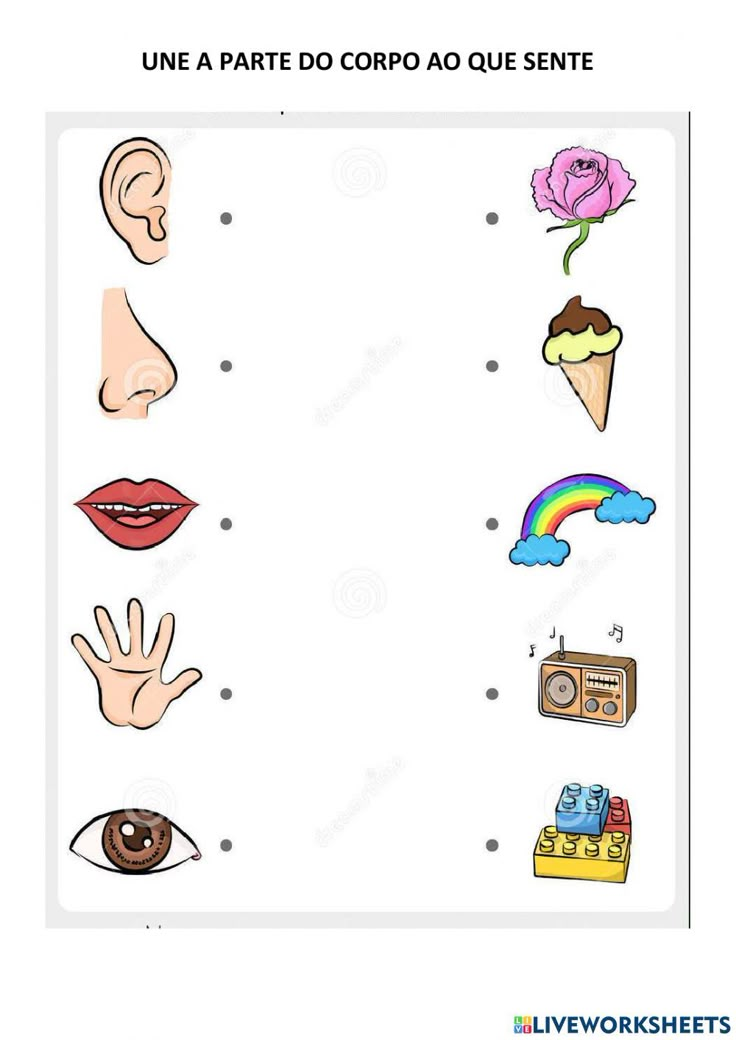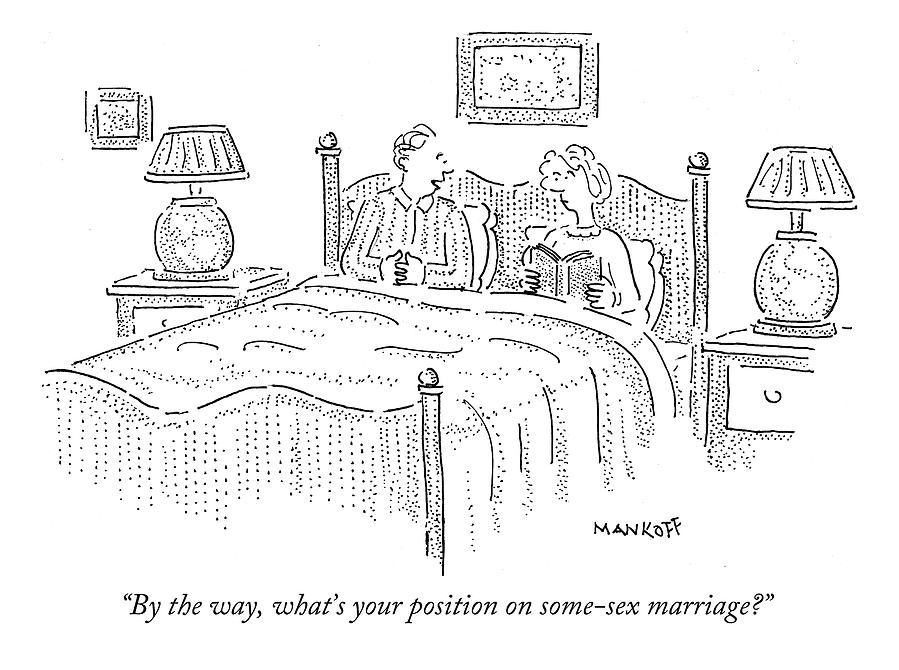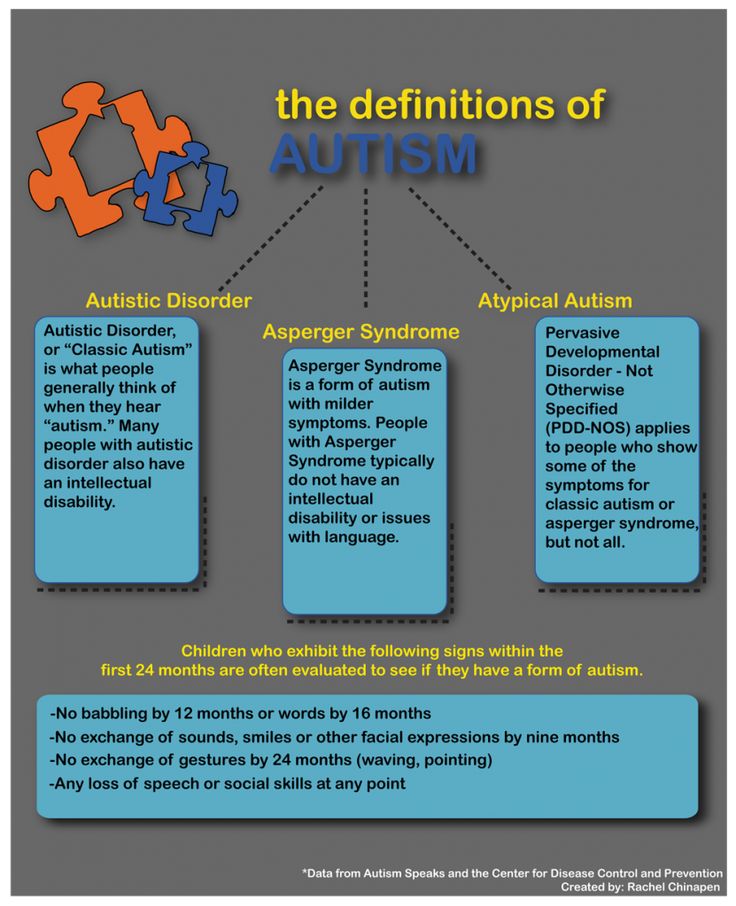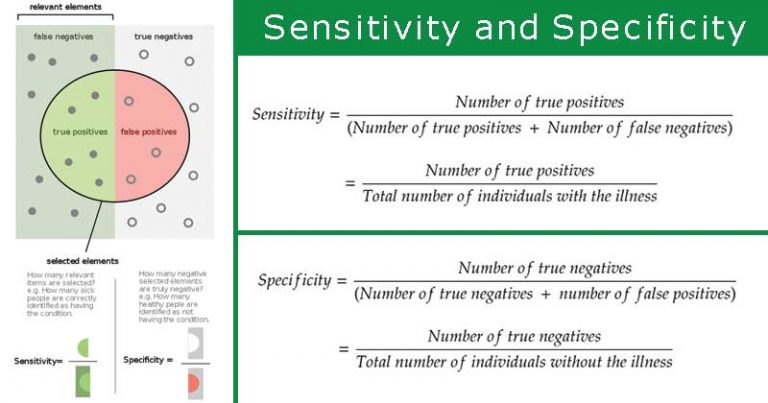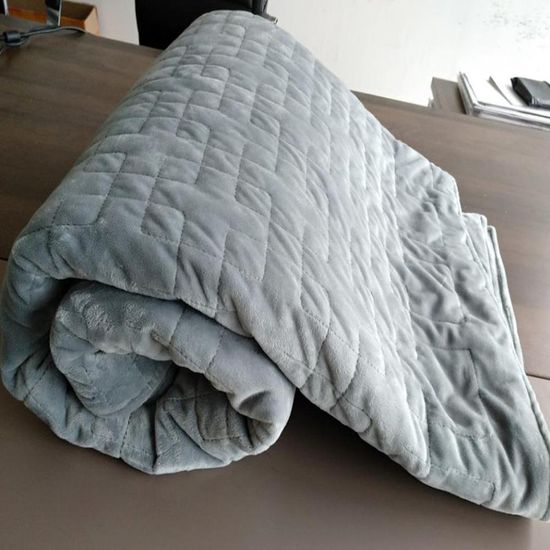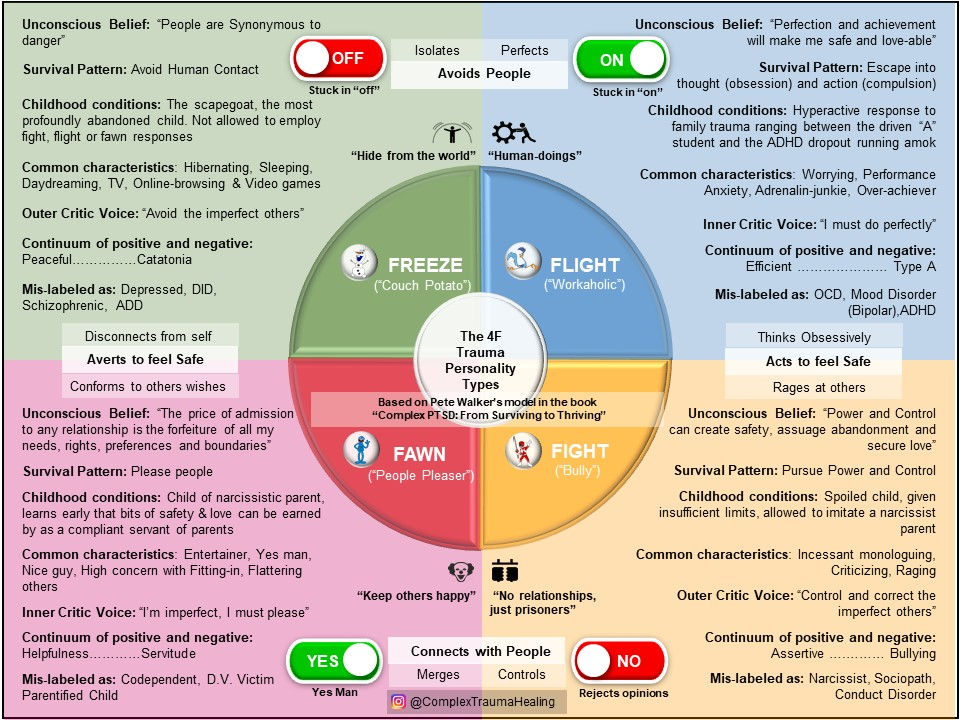5 senses for anxiety
The Best 5-Senses Grounding Techniques for Anxiety Relief
Everyone feels anxious at one time or another. But did you know that engaging your five senses may help calm your worries?
Not everyone experiences anxiety in the same way, and what may offer anxiety relief to you may not work for someone else.
While many people take medications or attend therapy to manage anxiety symptoms, exercises that engage your five senses may also be helpful. This is particularly so when you need something that works right here, right now.
Indeed, intentionally focusing on hearing, touch, smell, taste, and sight might offer quick relief.
For someone with anxiety, knowing how to effectively use all five senses can be a powerful tool.
Grounding techniques are strategies that help connect or “ground” you in the present moment. They’re essentially a form of mindfulness, which has been shown to help many different mental health conditions.
A large 2014 research review with nearly 19,000 studies concluded that mindfulness-based stress reduction programs can ease symptoms of anxiety, depression, and pain.
Experts believe that grounding techniques, specifically, help you detach from emotional pain, so you can better regulate your emotions.
Grounding encourages you to take a break from your negative thoughts that may be causing anxiety until you’ve calmed down.
Grounding methods for anxiety are different from other relaxation exercises in that they focus heavily on distractions and quieting extreme emotions.
A small 2015 study found that just 1 hour of grounding exercises helps improve mood in people with anxiety and depression more than relaxation alone.
An added benefit of grounding techniques is that they can be done at any time, without anyone else knowing that you’re using them.
One popular grounding technique is the 5-4-3-2-1 method. Here’s how to practice your five senses grounding.
First, you may want to start with a simple deep breathing exercise called the 5-5-5 method. To do this, you breathe in for 5 seconds, hold your breath for 5 seconds, and then breathe out for 5 seconds.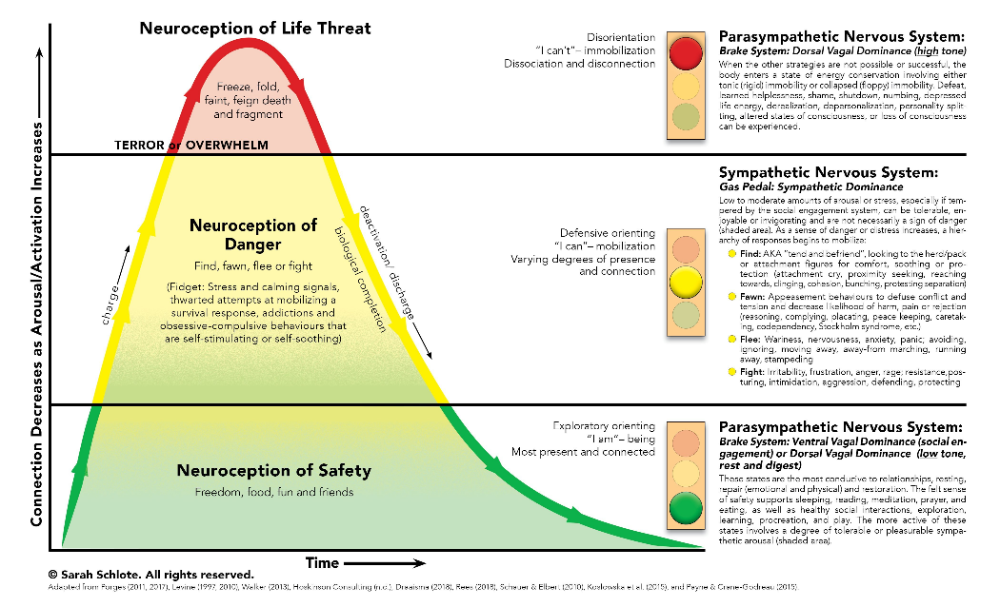
You can continue this process until your thoughts slow down or you notice some relief.
When you can find your breath, try practicing the 5-4-3-2-1 technique. For that, you want to look around and focus on:
- 5 things you see
- 4 things you feel
- 3 things you hear
- 2 things you smell
- 1 thing you taste
The idea is that the 5-4-3-2-1 technique helps you shift your focus to what’s currently happening around you instead of what’s making you feel anxious.
Focusing on each of your senses is a simple way to distract yourself from those thoughts that may be causing your anxiety.
Consider choosing a couple of exercises for each sense and trying to focus all your attention on the sensations.
Sight
To engage your sense of sight, here are some ideas:
- Look at every little detail on a family photo on the wall.
- Focus on a small object, such as a pencil or coffee mug, and identify every color and shape.
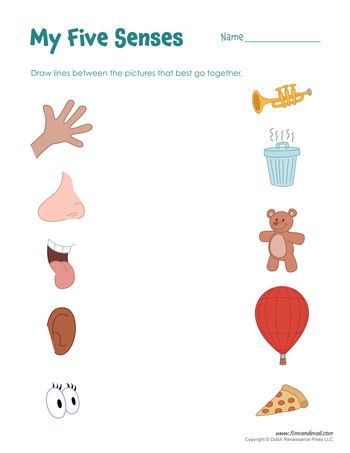
- Look at the sky for clouds, birds, sunrises, or anything else you can spot around.
- Focus your attention on a plant or flower and how it moves with the wind.
- Observe a pet while they play or rest.
You can pick large or small items to focus on. Once you choose an object, try to notice the color, texture, and patterns.
Touch
Activating your sense of touch can help distract you from anxious thoughts and may help you decrease the physical signs of anxiety.
You might want to try these exercises:
- Put your hands under running water, alternating between warm and cold temperatures every 30 seconds.
- Focus on how your clothing feels on your body or how your hair feels on your head.
- Touch different body parts by pressing down and holding for 30 seconds before moving to a different area.
- Touch the furniture in your living area and focus on its texture. For example, take notice of a smooth table.
Hearing
Focusing on external sounds can help ground you in the moment.
Here are some noises to notice:
- a barking dog
- a stomach rumbling
- a clock ticking
- traffic outside
- a car or subway engine
- music
- conversation
- birds singing
- the wind blowing
Smell
To incorporate smell into your grounding techniques, you may want to try these tips:
- Walk into your bathroom and sniff a bar of soap or shampoo.
- Light a scented candle.
- Diffuse a scented oil.
- Take in simple smells around you, such as the scent of a pillow on the couch or a pencil.
- Walk outside and breathe deeply through your nose. Maybe you will smell fresh cut grass or flowers blooming.
Taste
Try to pick something that you can easily taste, such as:
- a piece of gum
- a mint
- coffee
- sugar and salt
- a piece of food
You don’t actually have to taste these items if you don’t have them on hand. Instead, try thinking about the distinct flavors as you remember them.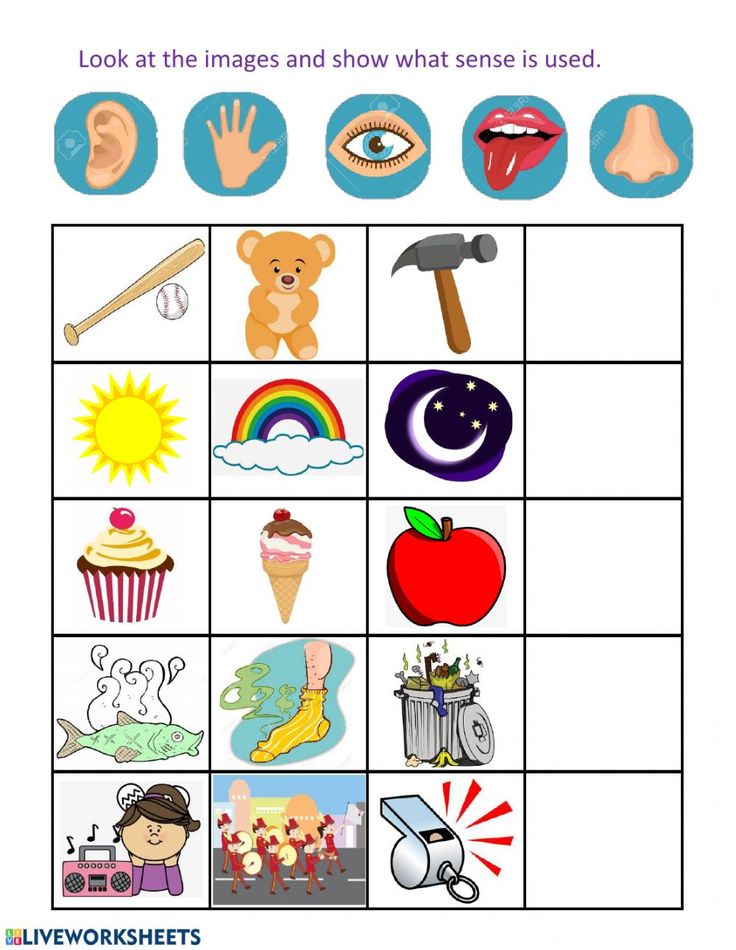
Here are some additional tips to consider that can help when trying to engage your 5 senses to calm down:
- Begin grounding yourself in your senses as soon you realize you’re experiencing strong emotions or a difficult mood.
- Don’t make good or bad judgements. For instance, if you’re focusing on a brown wall but don’t like the color brown, simply tell yourself: “The wall is brown,” instead of, “I don’t like brown.”
- Do your best to focus on the present, not the past or future. If your thoughts wander, softly bring them back to your senses.
- Notice your mood before and after using a technique to see if it’s working for you. You might want to use a scale of 0 to 10 to rate your symptoms. Noticing relief may calm you down even more.
- Be flexible. If you notice one method is more successful than another, stick with that without judgement.
- Don’t give up. It might take a few attempts before grounding methods are successful.
Engaging all your five senses may help reduce symptoms of stress and worry.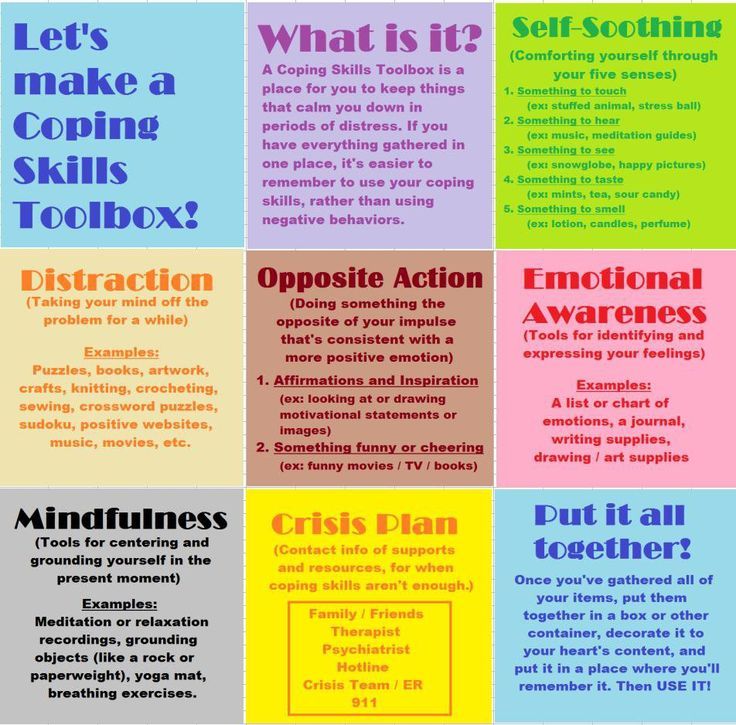
You can follow simple grounding exercises that activate your five senses — sight, touch, hearing, smell, and taste. For example, simply listening to birds chirping or smelling fresh cut grass could help you focus less on your anxious thoughts and more on the present moment.
If you’re having a difficult time managing your anxiety, you may want to consider reaching out to a mental health expert. They can provide you with additional tools to manage your symptoms and discover the root cause of the anxiety.
The Best 5-Senses Grounding Techniques for Anxiety Relief
Everyone feels anxious at one time or another. But did you know that engaging your five senses may help calm your worries?
Not everyone experiences anxiety in the same way, and what may offer anxiety relief to you may not work for someone else.
While many people take medications or attend therapy to manage anxiety symptoms, exercises that engage your five senses may also be helpful. This is particularly so when you need something that works right here, right now.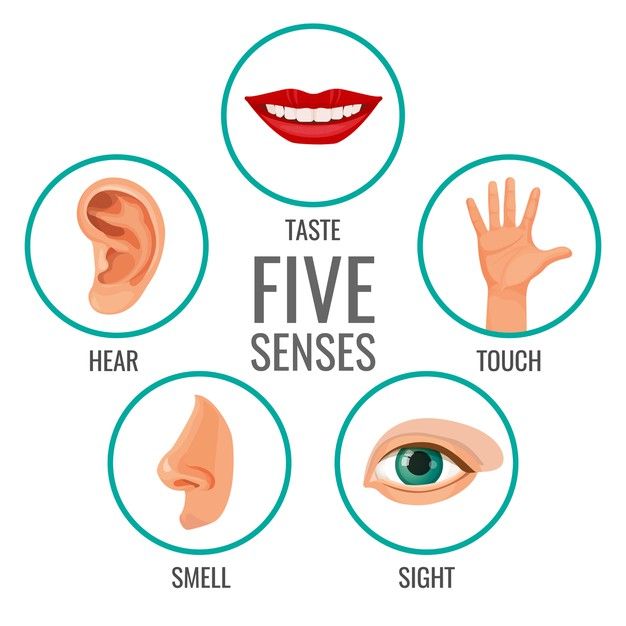
Indeed, intentionally focusing on hearing, touch, smell, taste, and sight might offer quick relief.
For someone with anxiety, knowing how to effectively use all five senses can be a powerful tool.
Grounding techniques are strategies that help connect or “ground” you in the present moment. They’re essentially a form of mindfulness, which has been shown to help many different mental health conditions.
A large 2014 research review with nearly 19,000 studies concluded that mindfulness-based stress reduction programs can ease symptoms of anxiety, depression, and pain.
Experts believe that grounding techniques, specifically, help you detach from emotional pain, so you can better regulate your emotions.
Grounding encourages you to take a break from your negative thoughts that may be causing anxiety until you’ve calmed down.
Grounding methods for anxiety are different from other relaxation exercises in that they focus heavily on distractions and quieting extreme emotions.
A small 2015 study found that just 1 hour of grounding exercises helps improve mood in people with anxiety and depression more than relaxation alone.
An added benefit of grounding techniques is that they can be done at any time, without anyone else knowing that you’re using them.
One popular grounding technique is the 5-4-3-2-1 method. Here’s how to practice your five senses grounding.
First, you may want to start with a simple deep breathing exercise called the 5-5-5 method. To do this, you breathe in for 5 seconds, hold your breath for 5 seconds, and then breathe out for 5 seconds.
You can continue this process until your thoughts slow down or you notice some relief.
When you can find your breath, try practicing the 5-4-3-2-1 technique. For that, you want to look around and focus on:
- 5 things you see
- 4 things you feel
- 3 things you hear
- 2 things you smell
- 1 thing you taste
The idea is that the 5-4-3-2-1 technique helps you shift your focus to what’s currently happening around you instead of what’s making you feel anxious.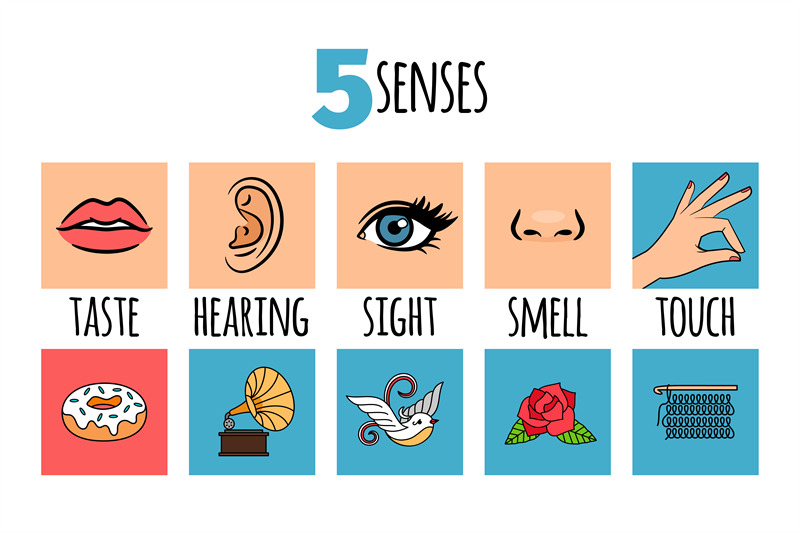
Focusing on each of your senses is a simple way to distract yourself from those thoughts that may be causing your anxiety.
Consider choosing a couple of exercises for each sense and trying to focus all your attention on the sensations.
Sight
To engage your sense of sight, here are some ideas:
- Look at every little detail on a family photo on the wall.
- Focus on a small object, such as a pencil or coffee mug, and identify every color and shape.
- Look at the sky for clouds, birds, sunrises, or anything else you can spot around.
- Focus your attention on a plant or flower and how it moves with the wind.
- Observe a pet while they play or rest.
You can pick large or small items to focus on. Once you choose an object, try to notice the color, texture, and patterns.
Touch
Activating your sense of touch can help distract you from anxious thoughts and may help you decrease the physical signs of anxiety.
You might want to try these exercises:
- Put your hands under running water, alternating between warm and cold temperatures every 30 seconds.
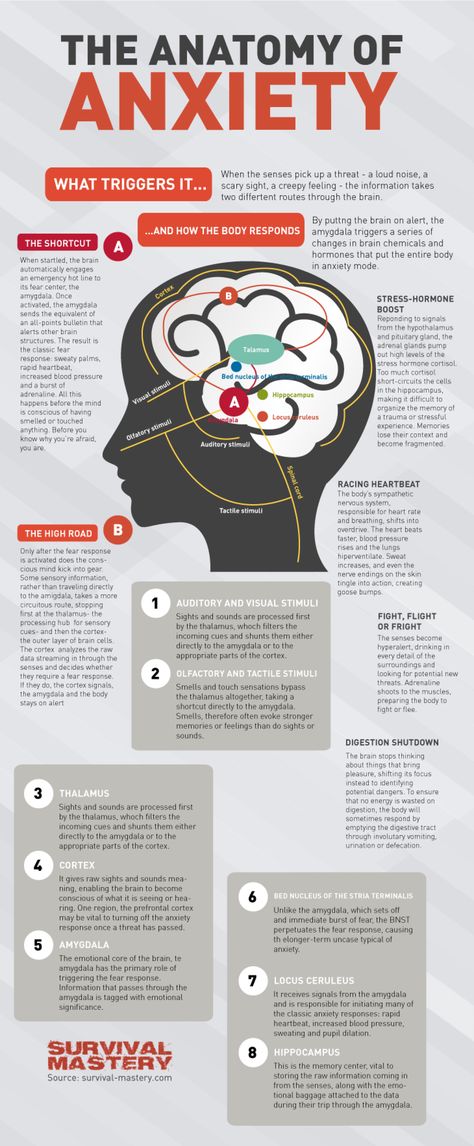
- Focus on how your clothing feels on your body or how your hair feels on your head.
- Touch different body parts by pressing down and holding for 30 seconds before moving to a different area.
- Touch the furniture in your living area and focus on its texture. For example, take notice of a smooth table.
Hearing
Focusing on external sounds can help ground you in the moment.
Here are some noises to notice:
- a barking dog
- a stomach rumbling
- a clock ticking
- traffic outside
- a car or subway engine
- music
- conversation
- birds singing
- the wind blowing
Smell
To incorporate smell into your grounding techniques, you may want to try these tips:
- Walk into your bathroom and sniff a bar of soap or shampoo.
- Light a scented candle.
- Diffuse a scented oil.
- Take in simple smells around you, such as the scent of a pillow on the couch or a pencil.
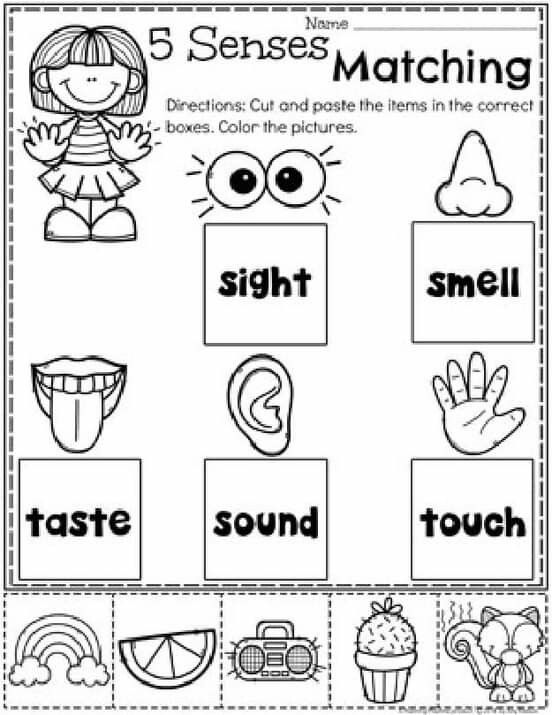
- Walk outside and breathe deeply through your nose. Maybe you will smell fresh cut grass or flowers blooming.
Taste
Try to pick something that you can easily taste, such as:
- a piece of gum
- a mint
- coffee
- sugar and salt
- a piece of food
You don’t actually have to taste these items if you don’t have them on hand. Instead, try thinking about the distinct flavors as you remember them.
Here are some additional tips to consider that can help when trying to engage your 5 senses to calm down:
- Begin grounding yourself in your senses as soon you realize you’re experiencing strong emotions or a difficult mood.
- Don’t make good or bad judgements. For instance, if you’re focusing on a brown wall but don’t like the color brown, simply tell yourself: “The wall is brown,” instead of, “I don’t like brown.”
- Do your best to focus on the present, not the past or future. If your thoughts wander, softly bring them back to your senses.
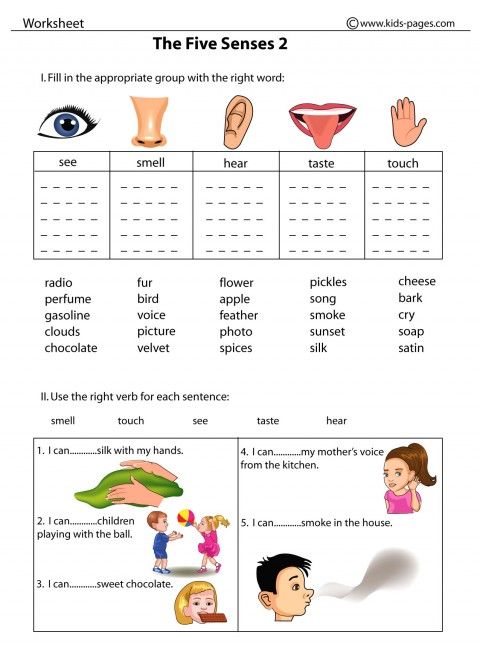
- Notice your mood before and after using a technique to see if it’s working for you. You might want to use a scale of 0 to 10 to rate your symptoms. Noticing relief may calm you down even more.
- Be flexible. If you notice one method is more successful than another, stick with that without judgement.
- Don’t give up. It might take a few attempts before grounding methods are successful.
Engaging all your five senses may help reduce symptoms of stress and worry.
You can follow simple grounding exercises that activate your five senses — sight, touch, hearing, smell, and taste. For example, simply listening to birds chirping or smelling fresh cut grass could help you focus less on your anxious thoughts and more on the present moment.
If you’re having a difficult time managing your anxiety, you may want to consider reaching out to a mental health expert. They can provide you with additional tools to manage your symptoms and discover the root cause of the anxiety.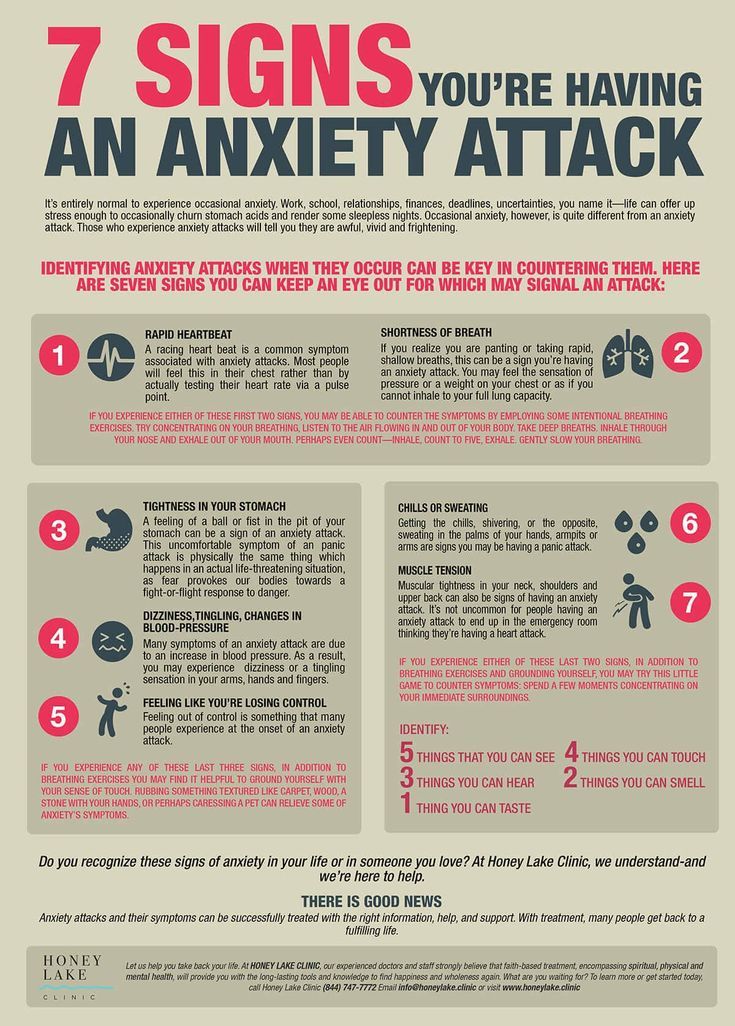
treatment, how to get rid of anxiety, how to deal with anxiety for no reason
Anxiety is a negatively colored mood with feelings of worry, tension, and fear. In moderation, such emotions are useful: they help to mobilize forces and find a way out of extreme situations. But there must be grounds for concern, and normally it lasts a limited period of time.
If a person constantly experiences a feeling of anxiety and anxiety for no reason, this may indicate the presence of a mental disorder. In the absence of help, constant tension wears out the nervous system and the body as a whole, which leads to a breakdown in adaptation mechanisms and the development of chronic diseases. nine0003
If you notice that you cannot relax for a long time, then you should think about visiting a specialist.
In pathological cases, a state of anxiety and restlessness without a cause manifests itself both mentally and physically.
Mental symptoms:
- constant feeling of fear and excitement for no reason,
- poor concentration and attention,
- sleep disorders,
- emotional lability, irritability, tearfulness,
- inability to relax and fully engage in daily activities or communication,
- the need to reassure others that everything is okay.
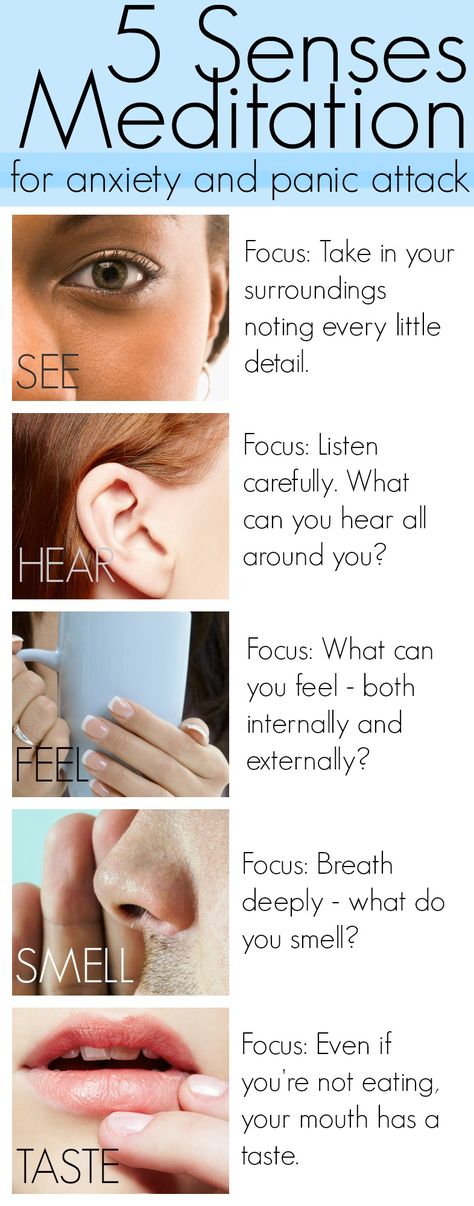 At the same time, words of support do not bring relief.
At the same time, words of support do not bring relief.
Physical symptoms:
- rapid breathing and heartbeat,
- headaches, pain in the abdomen and in the region of the heart,
- excessive sweating,
- eating disorders: increased or loss of appetite,
- weakness,
- shivering, chills,
- stool disorders: frequent urge, constipation,
- feeling short of breath,
- nausea,
- muscle spasms and pain.
Unreasonable anxiety and anxiety increase or smooth out from time to time. Exacerbations often accompany stress: conflicts, important events, illness. Normally, a person recovers quickly after the situation is resolved, but when upset, negative emotions do not go away. nine0003
The intensity of anxiety varies from mild to severe. The extreme is panic. If you ignore an anxiety state for a long time for no reason, then panic attacks can join it. They overtake unexpectedly and sometimes without a good enough reason, but after this episode, a person begins to avoid situations similar to the one in which it happened: public transport, an elevator, or just a crowd of people.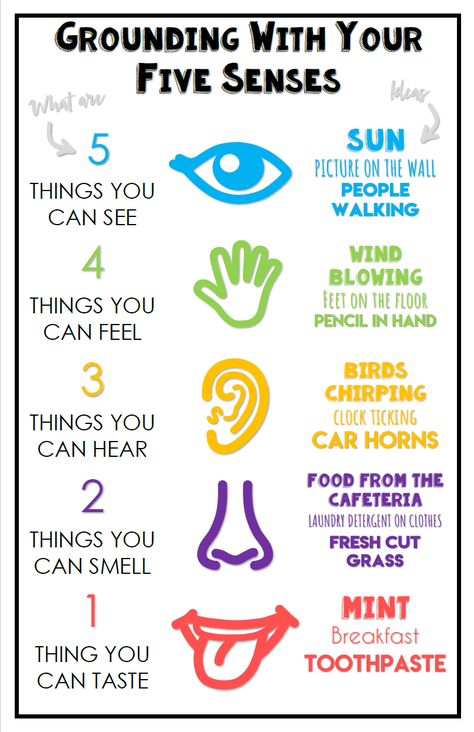 This greatly reduces the quality of life and can lead to social isolation. nine0003
This greatly reduces the quality of life and can lead to social isolation. nine0003
Causes of causeless anxiety and anxiety
The occurrence of anxiety disorder is influenced by heredity. It has been found that certain brain structures and features of biological processes play an important role in the emergence of fear and anxiety. Personal characteristics, somatic health problems, lifestyle and various types of addictions also matter. Sometimes there is no cause for causeless anxiety and worry. Negative feelings usually have a trigger - an event or thought that causes an anxious response. However, most people are not aware of their triggers and believe that their emotions are groundless. In this case, only a specialist will help to understand why excitement arises for no reason. nine0003
There are a number of diseases, the symptoms of which are constant anxiety. With causeless fear and anxiety, the reasons may be as follows:
- Generalized Anxiety Disorder: Persistent nervousness and worry over small things that are usually visible to others and last 6 or more months.
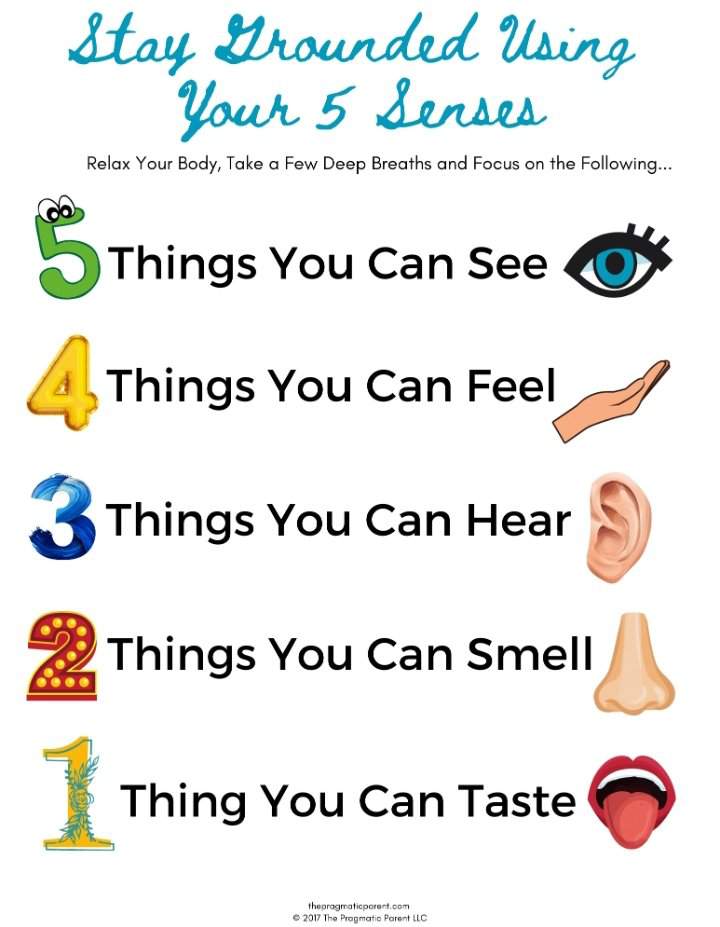 It starts in adolescence and intensifies with age.
It starts in adolescence and intensifies with age. - Obsessive-compulsive disorder: obsessive thoughts and fears that are accompanied by obsessive actions that do not bring relief. Obsessive-compulsive disorder is distinguished - a person is indomitably haunted by memories that reproduce a traumatic situation. nine0014
- Phobias: irrational fear of any, even mundane, things. Accompanied by uncontrolled panic and physical manifestations.
- Panic attack - an excruciating and sudden attack of panic, which is accompanied by a fear of death and vivid somatic symptoms. The regular occurrence of panic attacks means the development of a panic disorder.
- Post-traumatic stress disorder: occurs after a severe traumatic situation and is accompanied by high levels of anxiety, avoidance and flashbacks. nine0014
These are the most common examples, but pathological anxiety can be a symptom of other disorders or the result of a failed stress management. If you want to understand why there is a feeling of anxiety for no reason, you should consult a doctor. Without clarifying the main factor and working on it, it is impossible to restore health and peace of mind.
Without clarifying the main factor and working on it, it is impossible to restore health and peace of mind.
What to do with causeless anxiety and anxiety
It is difficult to live in constant stress. If you experience causeless anxiety and fear of what to do, the following list will tell you: nine0003
- Talk to someone you trust. This could be a relative, a close friend, a therapist, or a helpline employee. People are social creatures, so communication is a good way to relieve internal tension.
- Find a way to calm down quickly. There is not always a person with whom you can share. Therefore, it is important to find a suitable method that will help you relax: breathing techniques, soothing music, aromatherapy, self-massage, and more. If you cannot independently choose a technique that quickly helps with anxiety for no reason, a specialist will tell you what to do. nine0014
- Add physical activity to your life. It is a natural and effective remedy for anxiety.
 Moderate sport relieves stress, lowers stress hormones, and strengthens the nervous system. Get at least 30 minutes of physical exercise a day.
Moderate sport relieves stress, lowers stress hormones, and strengthens the nervous system. Get at least 30 minutes of physical exercise a day. - Normalization of lifestyle. Get enough sleep, eat well, give up bad habits. This stabilizes physical performance and neurotransmitter levels, which helps maintain emotional balance. nine0014
- Start keeping a diary. Notes help identify patterns of anxiety flare-ups, understand the causes, and notice early signs of their occurrence. Also, thanks to this, you will begin to focus more on positive events that you might not have noticed before.
With excitement for no reason, everyone who regularly encounters this wants to know what to do. There is no universal method, however, the 5 steps listed above are recommended for every person with increased anxiety. This may be enough to alleviate symptoms. But if self-help techniques do not give the desired effect, then with a regularly occurring feeling of anxiety for no reason, you need to find out from a specialist what to do.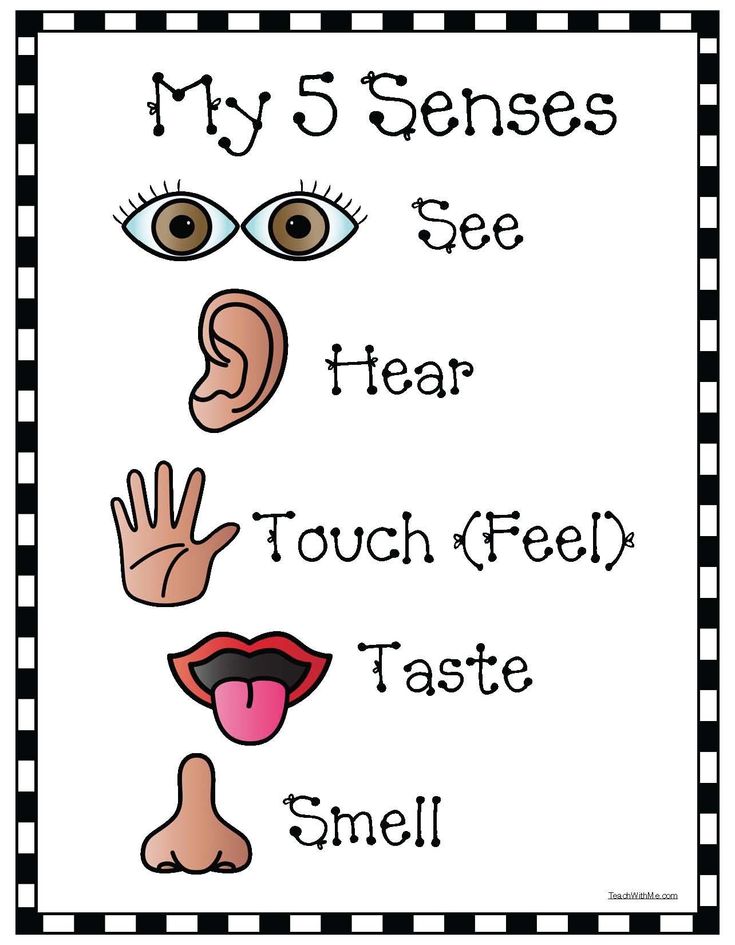 nine0003
nine0003
Treatment of causeless feelings of anxiety and restlessness
Regardless of the cause of pathological anxiety, professional help is the only complete method to eliminate the problem. If you have constant excitement and anxiety for no reason, you can quickly and effectively learn from a psychiatrist or psychotherapist how to get rid of this condition.
Due to the diversity of anxiety disorders, their therapy must be adapted to the individual clinical picture and diagnosis. Therefore, only a highly qualified specialist who has experience working with different types of anxiety conditions can tell you how to get rid of an anxiety state for no reason. For example, the therapy algorithm for a patient with obsessive-compulsive disorder (OCD) is different from the help for panic attacks. nine0003
For a state of anxiety and anxiety without a cause, treatment includes the following approaches:
- Psychotherapy. The most promising direction, which not only eliminates the symptom, but identifies the cause and fights it.
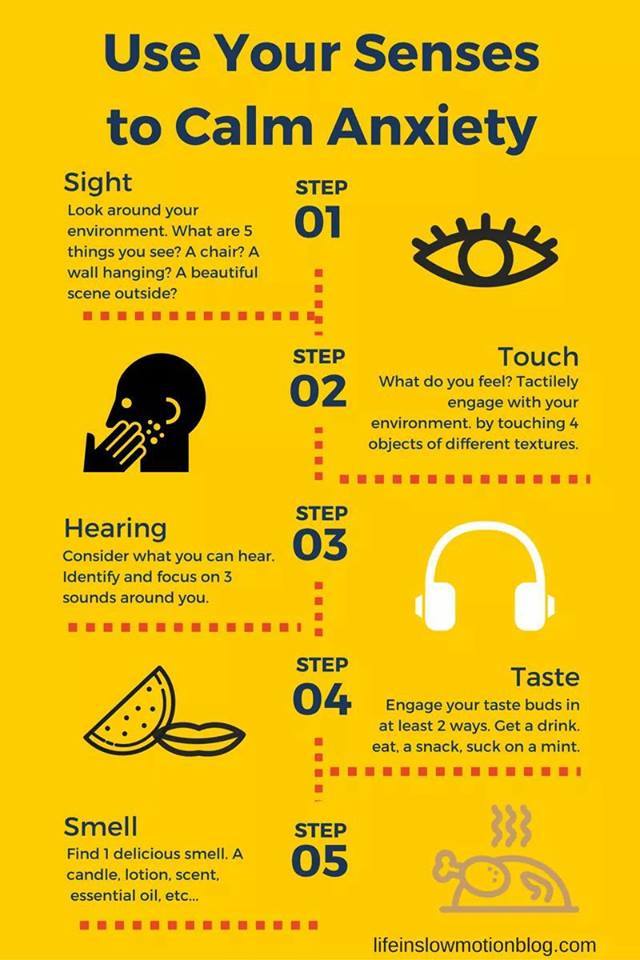 Therapy teaches when feeling anxiety for no reason, how to get rid of acute attacks of anxiety, relax, look at life situations differently. The doctor will help to uncover the main causes of your fears and work them out. The patient receives the tools to overcome anxiety and uses them successfully. Cognitive-behavioral therapy is usually used: in the course of treatment, the patient encounters an object of concern and gradually gains confidence that he can control the situation. nine0014
Therapy teaches when feeling anxiety for no reason, how to get rid of acute attacks of anxiety, relax, look at life situations differently. The doctor will help to uncover the main causes of your fears and work them out. The patient receives the tools to overcome anxiety and uses them successfully. Cognitive-behavioral therapy is usually used: in the course of treatment, the patient encounters an object of concern and gradually gains confidence that he can control the situation. nine0014 -
Medical therapy. Depending on the type of anxiety and the presence of associated mental or physical health problems, antidepressants, sedatives, sleeping pills, and other drugs may be prescribed. When anxiety is felt without a cause, drug treatment will alleviate the symptoms and improve the quality of life of the patient during his psychotherapeutic work on the underlying cause. Uncontrolled medication leads to dangerous side effects and withdrawal syndrome, so they can only be used according to the individual course prescribed by the doctor.
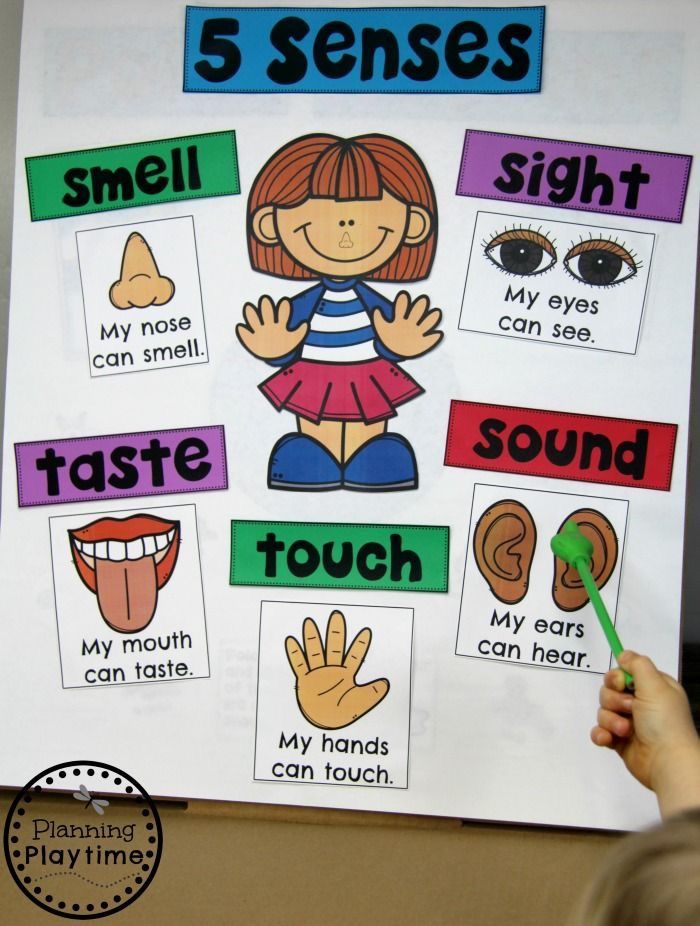 nine0003
nine0003
It is recommended to use a combination of psychotherapeutic and drug treatment, but sometimes only the first one is enough.
You should not put off visiting a doctor if you feel that experiences are preventing you from living. Over time, the symptoms worsen and other severe mental illnesses join: depression, neurotic disorders, and more. If the normalization of lifestyle does not help, it means that you will understand how to get rid of unreasonable anxiety only from a psychotherapist. With a timely appeal to a competent specialist, only a few sessions of psychotherapy may be enough for recovery. nine0003
Thanks to modern psychotherapeutic approaches, hundreds of people are making great strides every day in the fight against anxiety disorders. There is no need to endure the painful burden of fear and anxiety, because timely assistance allows you to achieve excellent results: the patient will fully recover and return to a full life, and the improvement will be noticeable after the first session.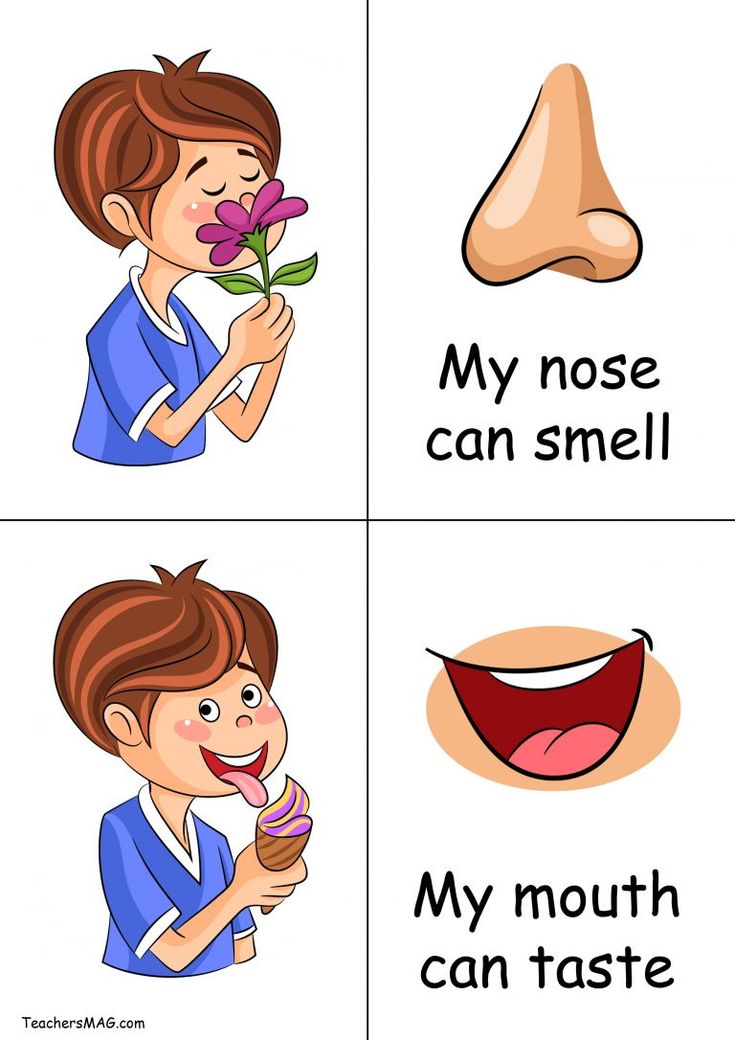
Five Days, Five Feelings – News – HSE for Its Own – National Research University Higher School of Economics
On the eve of a session, students often feel anxious. Psychologist of the Center for Psychological Counseling Ekaterina Solovieva tells how to cope with it and find support and resources in the outside world, using the 5 senses prompt.
We invite you to try for five days to devote time and attention to pleasant and supportive things and activities - you can choose from our list, or you can come up with something of your own. Each day will be dedicated to one of the feelings.
Day 1: Vision
Gather or buy a small bouquet of flowers, create a "beauty corner" in your room, set the table beautifully, light candles at dinner, go to an art exhibition, admire beautiful buildings/landscapes. Make yourself a manicure with the color that resonates with you the most at the moment, look at an album with reproductions of paintings or photographs.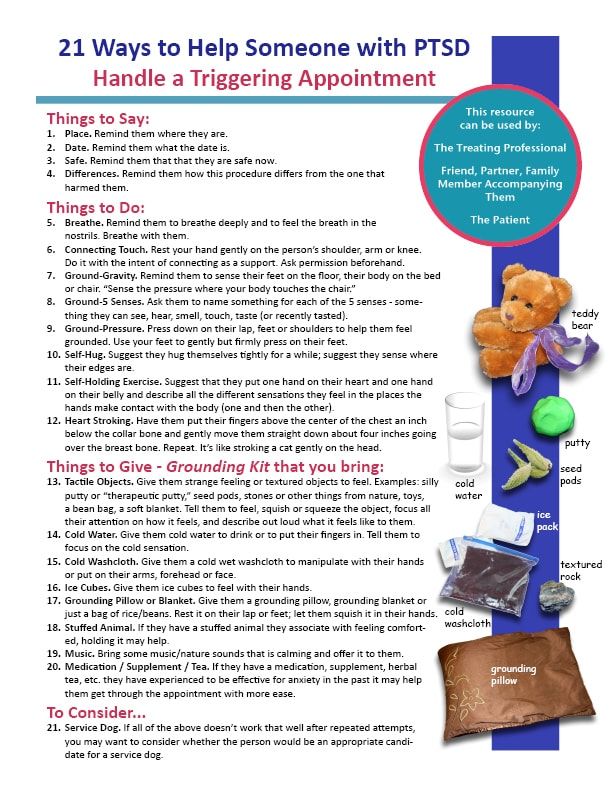
During the day, pay attention to visual images, remember those that inspire you.
Day 2: Rumor
Start the day by listening to your favorite music, sing along to your favorite artists. On this day, listen to the sounds of nature - the singing of birds, the rustle of leaves, the impact of raindrops on the roof. Listen to the sound of the voices of your family and friends, stop in the subway and listen to the musicians play.
Day 3: Smell
Use your favorite perfume or cream, go to a perfume shop and choose a new fragrance for yourself (you don't have to buy it, you can use a tester), light a scented candle or lamp, put a drop of lemon oil on your bedding, bake vanilla or cinnamon cake. Go to a pastry shop or bakery and enjoy the aroma of freshly baked bread. Take a walk in the park, inhaling the smells of plants and earth. nine0003
Day 4: Taste
Have a delicious meal, make yourself a soothing drink - herbal tea or hot chocolate. Treat yourself to dessert, try different types of ice cream, make or buy yourself something you wouldn't normally allow (such as freshly squeezed orange juice), eat slowly, enjoy what you eat.